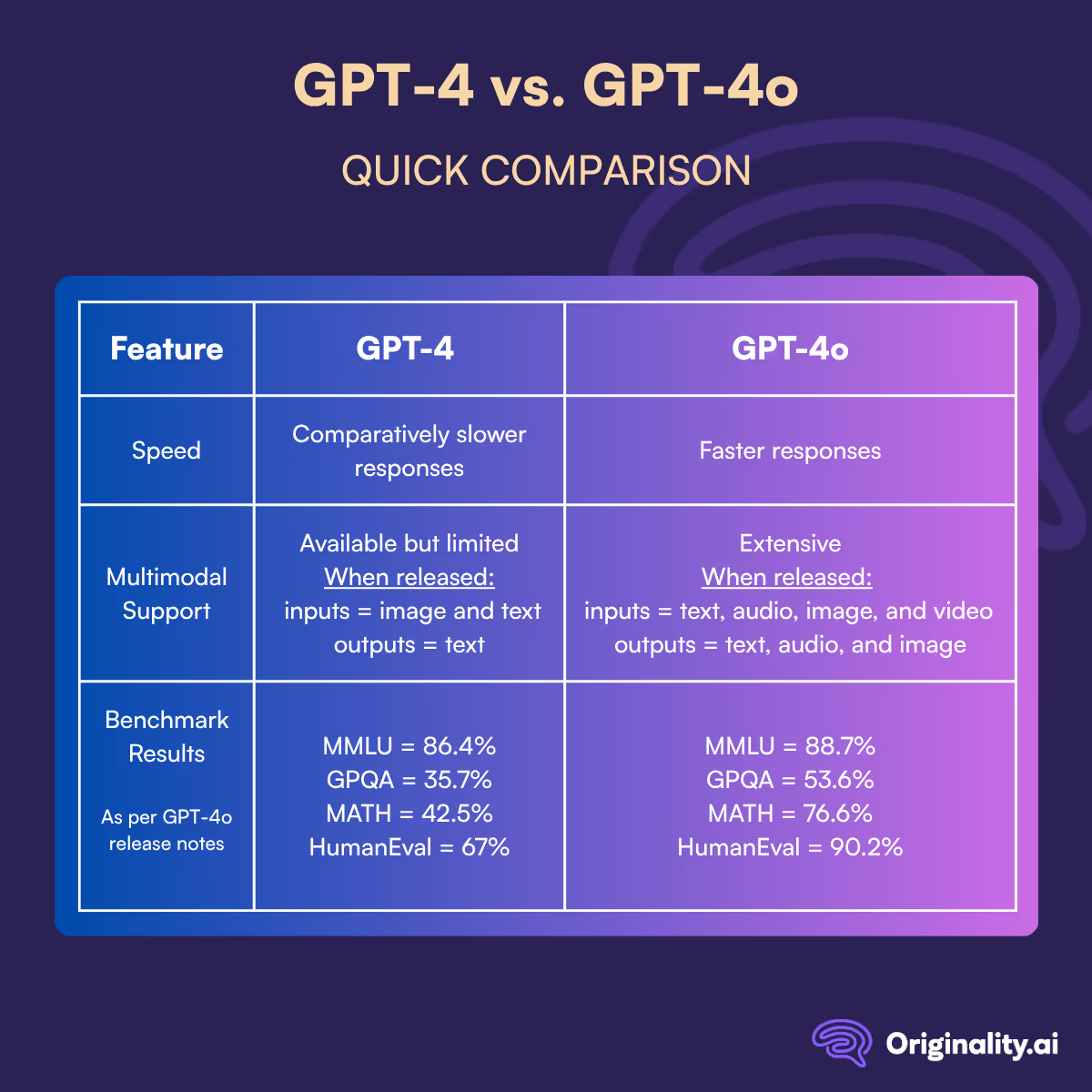Back in April 2025, OpenAI announced the official retirement of GPT-4 (and retired the model in the same month), closing a chapter on one of its key models.
Of course, the retirement of GPT-4 is not an end to the AI rise, or the developments of OpenAI, far from it. Instead, it is a step forward, making way for its successor GPT-4o.
But what does GPT-4’s sunset mean? Here, we’ll break this down in more detail, compare the newer model, and discuss what this means for the future.
Launched in March 2023, GPT-4 was a major release for OpenAI, acting as a landmark in the evolution of AI.
Unlike GPT 3.5, GPT-4 was a significant leap forward in performance, especially regarding handling real-world and more complex tasks.
When launching the model, OpenAI used the example of how it handled test-taking to describe its capabilities: “it [GPT-4] passes a simulated bar exam with a score around the top 10% of test takers; in contrast, GPT‑3.5’s score was around the bottom 10%.”
As new iterations were released (such as GPT-4 Turbo and GPT-4o), the original model slowly took a step back from its cutting-edge spotlight to legacy.
Yet, its influence cannot be understated.
In announcing the retirement of GPT-4, OpenAI noted the important role which GPT-4 played in the development of OpenAI models:
“GPT‑4 marked a pivotal moment in ChatGPT’s evolution... We’re grateful for the breakthroughs it enabled and for the feedback that helped shape its successor. GPT‑4o builds on that foundation to deliver even greater capability, consistency, and creativity.” - OpenAI
While GPT-4 was groundbreaking when it was launched, the decision to retire it early this year was not a sudden decision, and one that many people saw coming.
When OpenAI released GPT-4o in 2024, it marked another significant leap forward in capabilities.
Ultimately, the rapid progress in AI model development has meant that GPT-4 was no longer the most effective model in every aspect.
To get a better idea of how GPT-4 compared to its GPT-4o successor, here’s a quick comparison.

Now, of course, this is only a brief snapshot of the comparative capabilities (as published in the 2024 GPT-4o release).
Since then, OpenAI has continued to release new models, such as GPT-4.5, released as a research preview in February 2025, as well as o3 and o4 mini, introduced in April 2025; further emphasizing the need to retire the now-outdated GPT-4 model.
As OpenAI continues to refine and release new models, it’s likely that in future OpenAI will continue to retire models as they are surpassed by the latest developments.
Fortunately, the impact on users has been minimal, if at all.
Free tier users of ChatGPT now benefit from having access to GPT-4o by default (with a limit on message quantity). Alternatively, the ChatGPT Free Tier may process queries with GPT-4.1 mini depending on demand and usage, with some limitations.
Given that free users have access to a more powerful model, this seems more like an upgrade than a loss.
Further, OpenAI notes that those on paid plans will continue to have the option to switch and select between a variety of models.
The retirement of GPT-4 in 2025 marks a significant milestone in the journey of AI.
GPT-4 helped define what was possible with generative AI, but progress continues to move at a rapid pace.
While for some GPT-4’s sunset may feel nostalgic, for others, it highlights just how quickly the technology is evolving.
Whether you’re a developer, business leader, or everyday user, the message is a clear one. The future of AI is faster, more intuitive, and constantly evolving.
Continue maintaining transparency in the age of AI with the best-in-class Originality.ai AI Checker.
Interested in learning more about AI? Check out our guides:
Then, learn more about AI detection accuracy:

We looked at all lawsuits occurring against OpenAI and listed them below. In addition to the relevant detail we had a lawyer provide some commentary. This list will remain updated as an easy-to-reference location for any lawsuits against OpenAI ordered by date (oldest to newest).